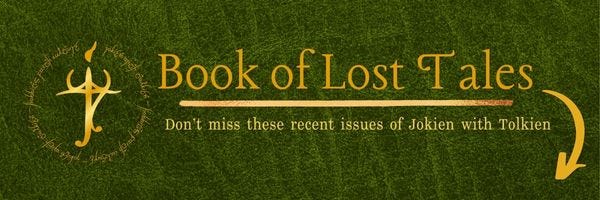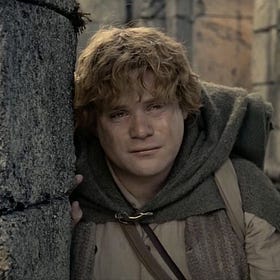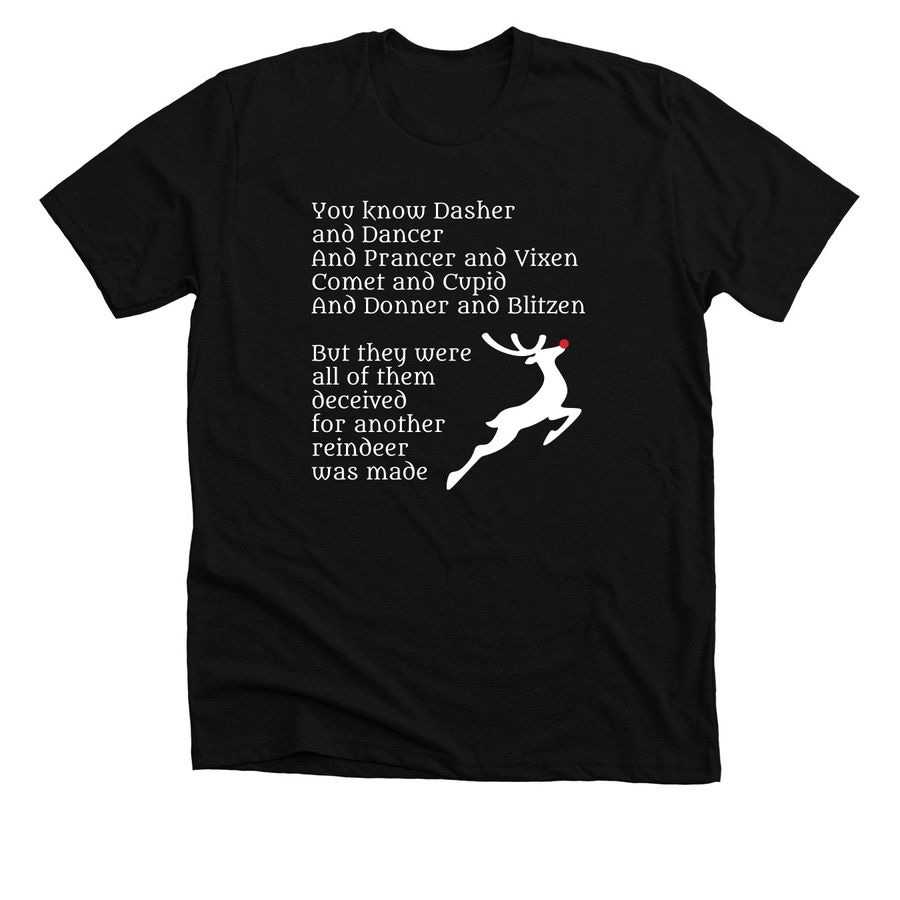Mae govannen, friends! Josh here with a guest post from Amy Mantravadi, who has written for us before on the meaning of Gandalf’s ‘I am a servant of the Secret Fire,’ the Gift of Ilúvatar, and Bilbo’s mercy towards Gollum.
Today she’s got a piece for us on Eowyn’s final fate in The Lord of the Rings and whether we should find her character arc ultimately satisfying or disappointing. Can’t wait for you to read it!
Enjoy the content Jokien with Tolkien brings to your inbox each week? Consider joining the Extended Edition as we begin a read along through Tolkien’s Great Tales next week, on 9/22!
It’s normally $5 a month or $40 a year to get full Discord access, bonus content every month, and the good feeling of supporting quality content like the below guest article.
But now through Monday, September 22, get 22% off and join us for the Great Tales Read Along for just $3.90 a month or $31 for the whole year!
Hit the button below to sign up:
Is Éowyn Alright?
by Amy Mantravadi
“They done my homegirl wrong!”
Thus read a comment section I recently happened across on social media, responding to the fate of one of J.R.R. Tolkien’s most empowered female characters, Éowyn of Rohan. Having slain the Witch King of Angmar and helped deliver victory in the Battle of the Pelennor Fields, Rohan’s fiercest shieldmaiden ceases maiding her shield and follows the path of domestic normalcy, marrying Faramir of Gondor and giving peace a chance. A dud of a character arc, according to some.
If you’ve seen a Disney movie in the past fifteen years, you know it is no longer fashionable for a lady to need rescuing, nor to find contentment in marriage and motherhood. Of course, there are portions of society that still embrace a domestic vision of womanhood to the point of being almost violently pro-natal. But marriage rates are down, birth rates are down, and more females are pursuing careers once exclusively male.
For today’s women, Éowyn is a role model because she is a fighter who goes toe-to-toe with men and a rebel who will not bow to the wishes of others. For much of The Two Towers and The Return of the King, Tolkien seems to endorse this vision of female empowerment. Then he upends it completely, turning Éowyn into a pathetic creature who doubts herself and agrees to marry the first man she meets…or so some say. However, a deeper look at Tolkien’s world can help us understand Éowyn’s character arc better.
When we first meet Éowyn in The Lord of the Rings, she is a caretaker for her bewitched uncle, King Théoden. “Slender and tall she was in her white robe girt with silver; but strong she seemed and stern as steel, a daughter of kings.”1 Clearly, this is no shrinking violet. In a conversation with Aragorn, she insists that while she must stay behind and keep watch over Edoras, she would rather join the warriors. In fact, she is desperate to find herself in dangerous circumstances.
‘Lord,’ she said, ‘if you must go, then let me ride in your following. For I am weary of skulking in the hills, and wish to face peril and battle.’
‘Your duty is with your people,’ he answered.
‘Too often have I heard of duty,’ she cried. ‘But am I not of the House of Eorl, a shieldmaiden and not a dry-nurse?’2
Here we see that Éowyn is proud. While pride was a good characteristic in the pre-Christian societies of northern Europe (from which Tolkien drew considerable inspiration), it has a decidedly mixed reputation in Christianity. To take pride in one’s heritage may be noble, but pride also goes before a fall. Likewise, shieldmaidens existed only in pagan societies, whereas Christians had a special inclination toward caring for the vulnerable.
Éowyn’s character is further revealed in a later conversation with Aragorn. Again, he forbids her from joining the men on a dangerous quest, and again she takes exception. “All your words are but to say: you are a woman, and your part is in the house. But when the men have died in battle and honour, you have leave to be burned in the house, for the men will need it no more. But I am of the House of Eorl and not a serving-woman. I can ride and wield blade, and I do not fear either pain or death.”3
Éowyn sees her situation as inherently patriarchal. The homes must be defended for the sake of the men. This is revealed by her sarcastic quote that once the men are dead, the women can be burned alive in the houses, because men will need them no more.
But what if Éowyn has misread the situation? What if riding off to almost certain death is not a privilege, but a burden? What if men ride into battle not to win glory, but to defend their homes? And what if they are defending those homes not for themselves alone, but also for the women and children?
If so, then Éowyn is privileged. She is not required to lay down her life unless all the men have laid down theirs. Perhaps on some level, Éowyn knows this and feels guilty that she is not taking on risk herself. Perhaps her grand claims about pursuing renown in battle obscure a sense of inadequacy. Or perhaps the situation does not neatly favor either males or females but requires different duties of both.
Of course, Éowyn’s desires do not arise in a vacuum. She has endured more suffering than her male counterparts realize, as Gandalf observes in a conversation with her brother Éomer, who blames her poor mood on lovesickness for Aragorn. (Typical man!)
‘My friend,’ said Gandalf, ‘you had horses, and deeds of arms, and the free fields; but she, born in the body of a maid, had a spirit and courage at least the match of yours. Yet she was doomed to wait upon an old man, whom she loved as a father, and watch him falling into a mean dishonoured dotage; and her part seemed to her more ignoble than that of the staff he leaned on.’4
In the Houses of Healing following her encounter with the Witch King, the true nature of Éowyn’s malady becomes clear. Her desire to die in battle is not, in fact, healthy. It arises from a kind of existential discontent within her. She is misaligned with nature, not because she wants to defend her loved ones in battle, but because she wants to die in battle. She is not thinking about her loved ones at all but about proving her value to herself and others—whereas in reality, her value is inherent. When she is awoken from illness, she cannot share her brother’s joy.
‘Great gladness it is to see you wake again to health and hope, so valiant a lady!’
‘To health?’ said Éowyn. ‘It may be so. At least while there is an empty saddle of some fallen Rider that I can fill, and there are deeds to do. But to hope? I do not know.’5
After slaying the lord of the Nazgûl and passing within an inch of death, Éowyn’s chief desire is to return to the field of blood. She seems almost disappointed to still be alive. This is not the mark of a well individual. She even claims that “it is not always good to be healed in body.”6 While dying in battle is necessary at times, such deaths are only accepted in the hope of healing for society. It is healing and not dying that ought to be pursued.
Only when she meets Faramir does her mindset begin to change, as seen in this passage from their first encounter.
‘But I do not desire healing,’ she said. ‘I wish to ride to war like my brother Éomer, or better like Théoden the king, for he died and has both honour and peace.’
‘It is too late, lady, to follow the Captains, even if you had the strength,’ said Faramir. ‘But death in battle may come to us all yet, willing or unwilling. You will be better prepared to face it in your own manner, if while there is still time you do as the Healer commanded. You and I, we must endure with patience the hours of waiting.’
She did not answer, but as he looked at her it seemed to him that something in her softened, as though a bitter frost were yielding at the first faint presage of Spring.7
Notice first the way Faramir speaks of death in battle: it is something to be avoided if possible and accepted only if necessary. See also how the change in Éowyn is described. She is thawing—coming into a personal spring. When she dashed off to battle, she was truly frozen in stasis, without purpose or validation. Only now, when she takes time to rest and reflect, does she begin to thaw and move outward toward others. Only now can she begin to desire healing, wholeness, and community. Later, Faramir tells her,
‘Once I pitied your sorrow. But now, were you sorrowless, without fear or any lack, were you the blissful Queen of Gondor, still I would love you. Éowyn, do you not love me?’
Then the heart of Éowyn changed, or else at last she understood it. And suddenly her winter passed, and the sun shone on her.
‘I stand in Minas Anor, the Tower of the Sun,’ she said, ‘and behold! the Shadow has departed! I will be a shieldmaiden no longer, nor vie with the great Riders, nor take joy only in songs of slaying. I will be a healer, and love all things that grow and are not barren.’8
Éowyn’s decision to cease being a shieldmaiden is empowered rather than disempowered. She is moving from darkness to light, death to life, slaying to healing. This is our true goal: not to contribute to the hurts of the world, but to heal them. War may sometimes be necessary, but it is never good. It can only end life, not create it.
Tolkien once wrote about Éowyn that “she was not herself ambitious in the true political sense. Though not a ‘dry nurse’ in temper, she was also not really a soldier or ‘amazon,’ but like many brave women was capable of great military gallantry at a crisis.”9 Which is to say, Éowyn is a complex character. She is not merely a housekeeper, nor merely a soldier. She has strength to wage war, but also to heal. Even as Aragorn is skilled both in battle and healing, so Éowyn uses the sword only to enable the coming of peace.
Therefore, Éowyn’s character arc does not end with her being stashed in a metaphorical closet. She is healed in body and mind so that she may provide healing to others. She becomes fully herself, freer than she ever was in battle. She is not bound to a single thing forever, but to whatever is necessary in the moment for the benefit of the world. I would argue this makes her a better role model for females than if she had simply found glory in battle.
Hey! Thanks for reading! Did you like this post? Then why not subscribe to Amy's Substack, Sub-Creations, to get more like it straight to your inbox?Interested in writing a guest piece like the above? Check out my submission guidelines
Looking for holiday gifts already? Grab “Another Reindeer” for yourself or another LOTR fan in your life:
Visit my bonfire store to check it out!
📚 You can read more of my writing by reading my books! My latest is a collection of essays on The Lord of the Rings, The Silmarillion, and more of Tolkien’s works (and their adaptations). You can also find it and more of my books on Amazon or Gumroad
⚔️ If someone forwarded this email to you or you found it through social media or Google, I’d like to invite you to join 13,000+ subscribers in the Jokien with Tolkien community: Subscribe here and get a free gift just for joining!
🏹 Chosen as a Substack Featured Publication in 2023
🪓 Official merch available in the Jokien with Tolkien store
❌ All typos are precisely as intended
🔗 Links may be affiliate, which is a free-to-you way to support this newsletter where I earn a small commission on items you purchase
🗃️ Can’t wait till next week for more content? View the archive
🤝 Want to sponsor a future issue of Jokien with Tolkien? View my rates and packages
Tolkien, J.R.R. The Lord of the Rings, Single volume edition (New York: Houghton Mifflin Company, 1994), 504.
Tolkien, 766-7.
Tolkien, 767.
Tolkien, 848-9.
Tolkien, 850.
Tolkien, 937.
Tolkien, 939.
Tolkien, 943.
“Letter 244 – From a draft to a reader of The Lord of the Rings” in The Letters of J.R.R. Tolkien, ed. Humphrey Carpenter (New York: Houghton Mifflin Harcourt, 2000), 323.












It's worth remembering, also, that Eowyn did not GIVE UP the sword as much as she TRANSCENDED it. By choosing to become a healer, she effectively sets herself as equal to the king himself; it was not because of his sword or his lineage that the people of Minas Tirith first accepted Aragorn as king, but rather for his skill as a healer. And she never repudiated her past; she carried the sobriquet "of the Shield-Arm" with pride for the rest of her days.
Great post! If I might split a few hairs here, in the spirit of "yes-and":
"But what if Éowyn has misread the situation? What if riding off to almost certain death is not a privilege, but a burden? What if men ride into battle not to win glory, but to defend their homes? And what if they are defending those homes not for themselves alone, but also for the women and children?"
It's true that riding off to almost certain death is a burden, and that the men riding into battle are doing it to defend their homes. It's *also* true that winning glory in battle is a *major* way to earn respect and improve one's reputation in her culture.
"If so, then Éowyn is privileged. She is not required to lay down her life unless all the men have laid down theirs."
She *is* required to lay down her life if the men fail, though. She's been specifically assigned to lead and defend the remainder of the people in the absence of her uncle and brother, and if they fail she will still have to do the work of dying in battle without the rightful wage of being remembered with honor.
She is suicidal, yes. She is acting as though glory in battle (or marrying a powerful man like Aragorn, who would treat her with the respect and honor her uncle and brother had been unwilling or unable to provide) is the only way to prove her worth. But in the context in which she was raised, she's not *wrong*. Her character arc isn't learning that she's been stubbornly clinging to a model of self-worth that she made up for herself - it's learning that the model of self-worth she had been taught isn't the only way to live. And it's worth noting that while she becomes a healer in a community where healing is highly respected, Faramir (who himself "uses the sword only to enable the coming of peace") and Aragorn both explicitly acknowledge that she *has* won glory in battle.